Today's blog is brought to you by Eric Jaeger, a cabinet specialist at Dunn Lumber. Every day, Eric guides people through the process of purchasing cabinets, from ideation to installation. In this blog, he shares a few tips to help make the experience a streamlined one. Visit one of our three cabinet showrooms in Lake Union, Bellevue, and Lynnwood for help with your kitchen build or remodel. Take it away, Eric.

As a cabinet specialist at Dunn Lumber, my days are spent helping people purchase the right cabinets for their home. Cabinet specialists like myself are here to make buying cabinets a simple, stress-free experience for homeowners and contractors alike—whether you’re building a new kitchen or remodeling an existing one. We’re proud to carry cabinets from Canyon Creek Cabinet Company—manufactured locally in Monroe, Washington—and you can visit one of our three cabinet showrooms to experience them firsthand as you start the purchasing process. Here are some tips to keep in mind along the way.
Consider lead time
Before you get started, it’s important to know that there’s typically a four- to six-week lead time in ordering your cabinets. This means that once you’ve gathered all the dimensions, made all your material choices, and placed the order, your cabinets will take around about a month to arrive—depending on how customized they are (and which vendor you use). Make sure to anticipate the lead time as you plan your remodel or new construction.
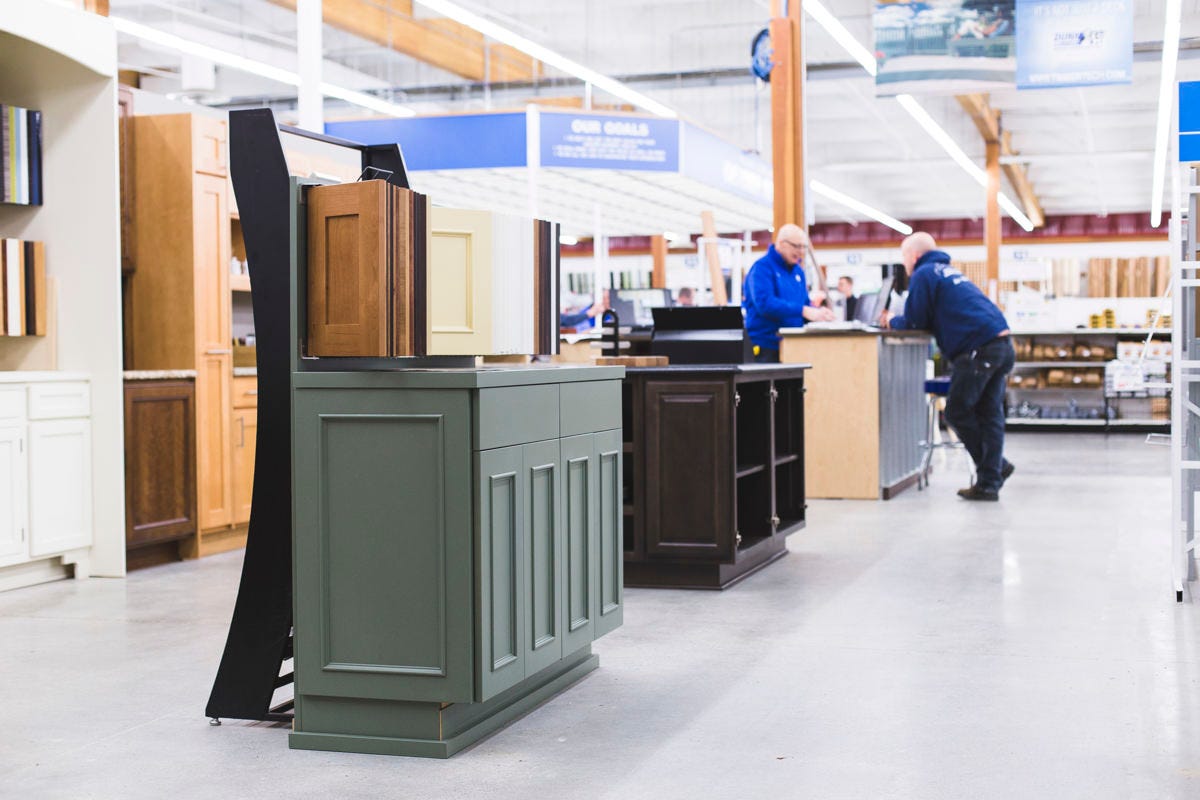
Think through your kitchen’s layout
To begin, take some time to think through what function your cabinets will serve. How do you use the space? One helpful kitchen design tip is to create an equilateral triangle between the sink, refrigerator, and stove—it creates an easy flow of activity. Where will you store pots and pans? Do you want open shelving? Where will the garbage and recycling go? What about a dishwasher? Think through what makes sense for the space, and come prepared to chat about your ideas. We’re happy to help you design your kitchen, and always encourage sketches and photos as we get started.
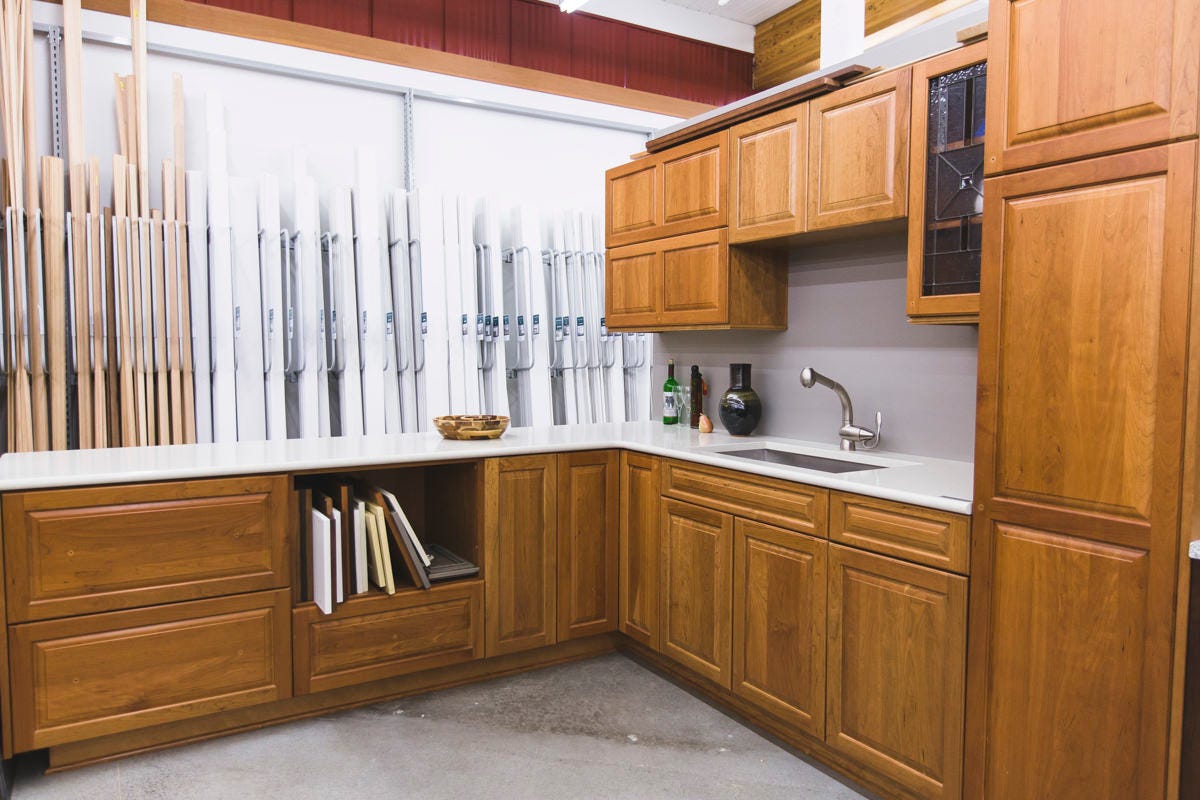
Collect measurements
It’s important to know your critical dimensions when planning your cabinet layout. Where will your plumbing be? Where is the gas or electric for your appliances located? Are there any doors or windows you’ll be working around? As you gather these measurements, remember to measure from the outside of any trim or casing, rather than the inside. And don’t forget to measure your ceiling height—this will determine the height of your cabinets.
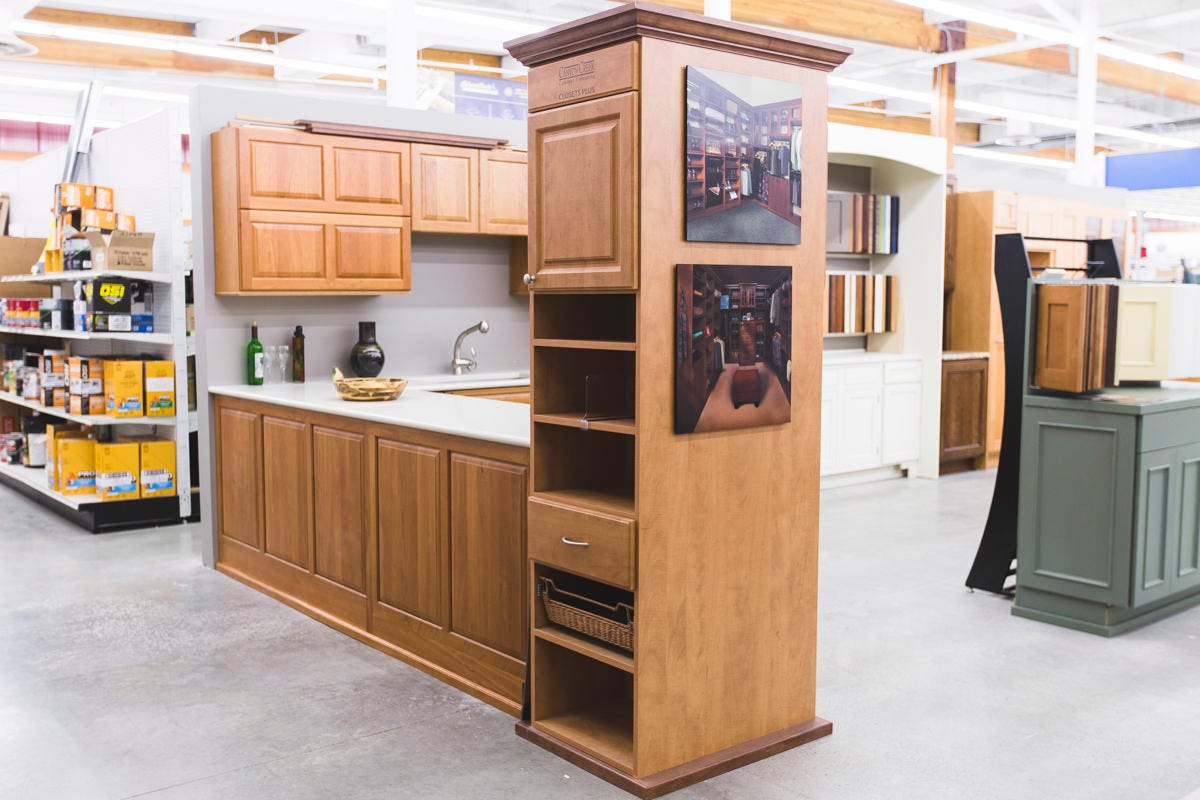
Visit a showroom
Once you’ve considered the layout and gathered measurements, sketches, and photos, it’s time for the fun part: choosing your cabinets. It’s a good idea to view your cabinet options in person—you can do this in one of our showrooms, which will help you visualize the cabinets in context. When you visit a showroom, we highly recommend bringing in inspiration and references, whether it’s a kitchen you saw in a magazine or an entire Pinterest board. To get you thinking, here are some of the cabinet choices you’ll be making:
- Cabinet face: Do you want framed or frameless cabinets? Framed cabinets have a more traditional, American look. Frameless cabinets are often referred to as European-style. Other than the aesthetic, the biggest difference between these two options is that a framed cabinet has, well, a frame, which means there’s more space between the doors and drawers.
- Wood type: For the box, I encourage people to consider plywood because it’s stronger, especially in sink bases. Having an under-sink leak at some point in time is pretty much inevitable. Particle board has improved tremendously over the years, but it will still deteriorate faster in water than plywood will. Door-wise, you have options. Oak has an open grain; beech has a huge variation in grain (the darker you stain it, the more pronounced the grain differentiation); maple is popular because it’s dense and has a tight-grain finish that has a nice, smooth finish when painted. Cherry and black walnut are great choices, too. Beyond this, the face of the doors and drawers are customizable—consider inset, full overlay, or partial overlay.
- Finish: Staining and painting are the typical options here. Again, it’s primarily an aesthetic choice. It helps to consider countertops at this point, too.
- Hardware: From the way your drawer slides in to the sound your cabinet door makes when it closes, there’s plenty of opportunity for cabinet and hardware customization, including the color of your pulls and hinges.
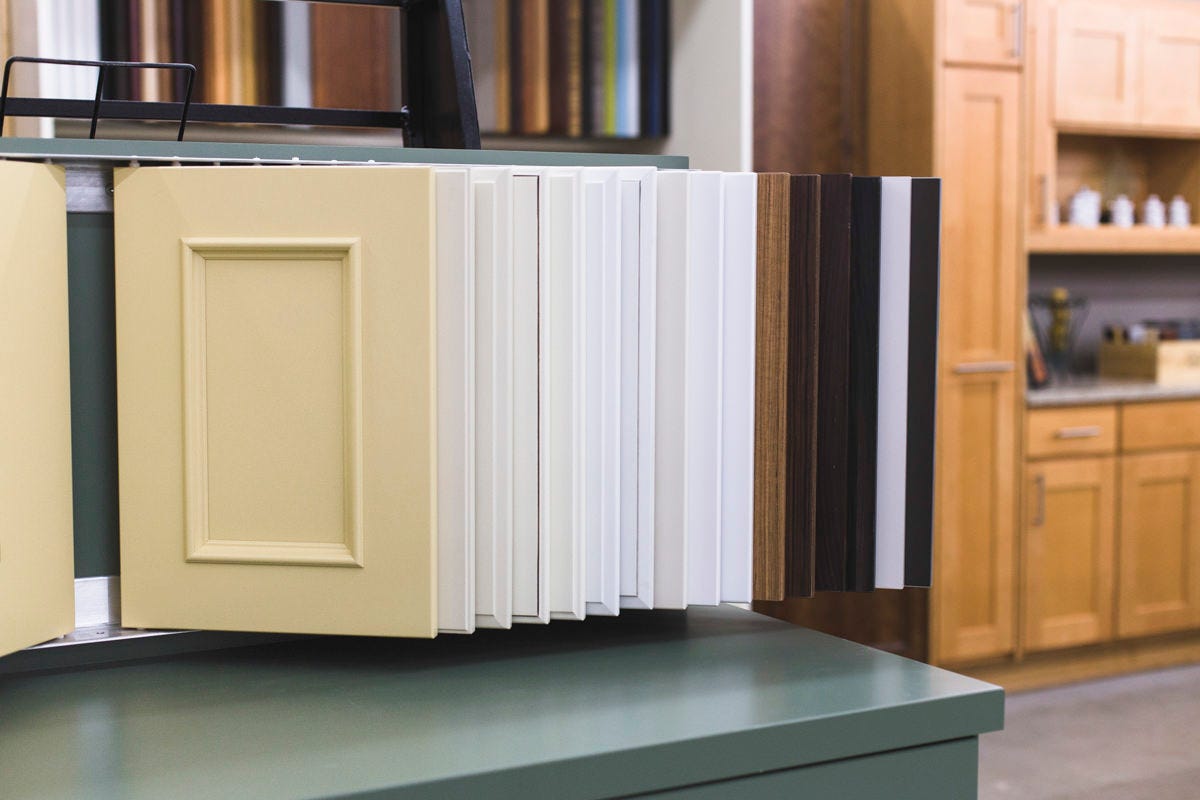

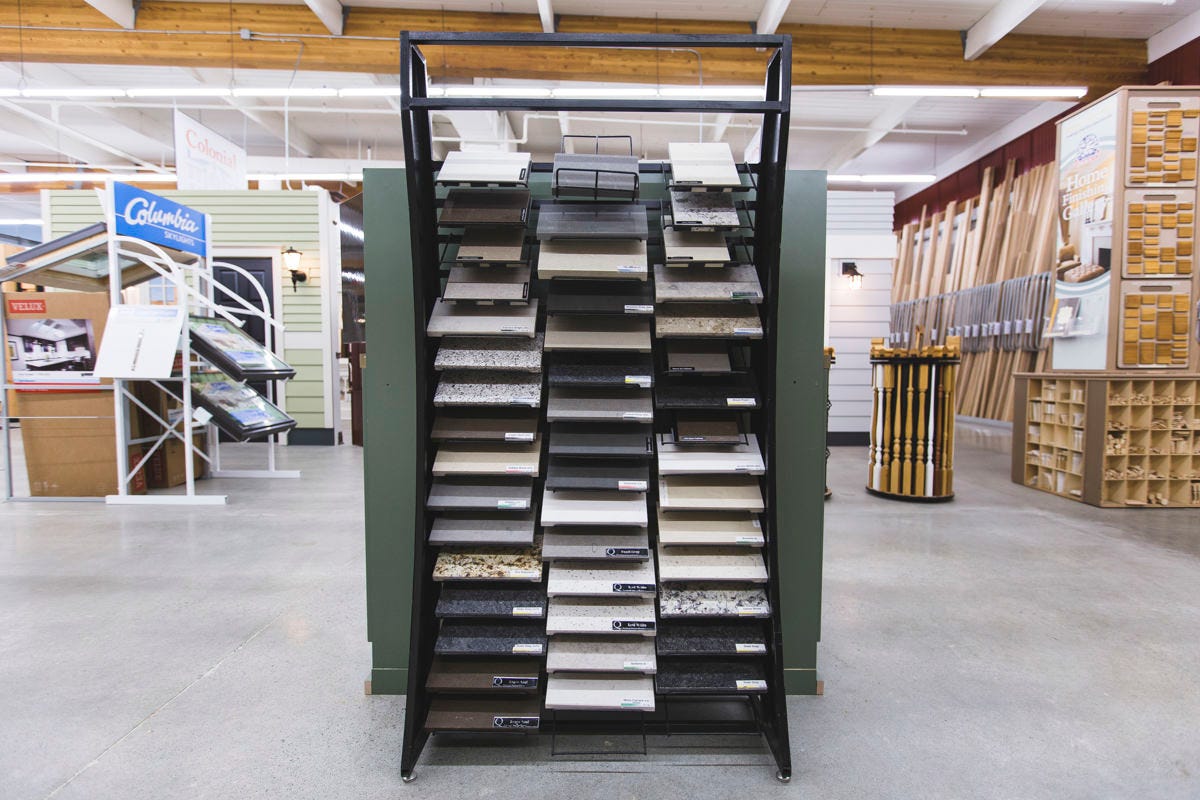
You may be tempted to order your cabinets on the spot, but it’s a good idea to go back to your space and revisit the decisions you’ve made. Do the cabinets you’ve designed still make sense in the space? If so, place your order—and try to wait patiently until delivery day.
For more information on choosing the right cabinets for your kitchen, read our guest blogs on cabinet finishes and different types of cabinetry by our Canyon Creek Cabinet Company partner Cindy Draper.


